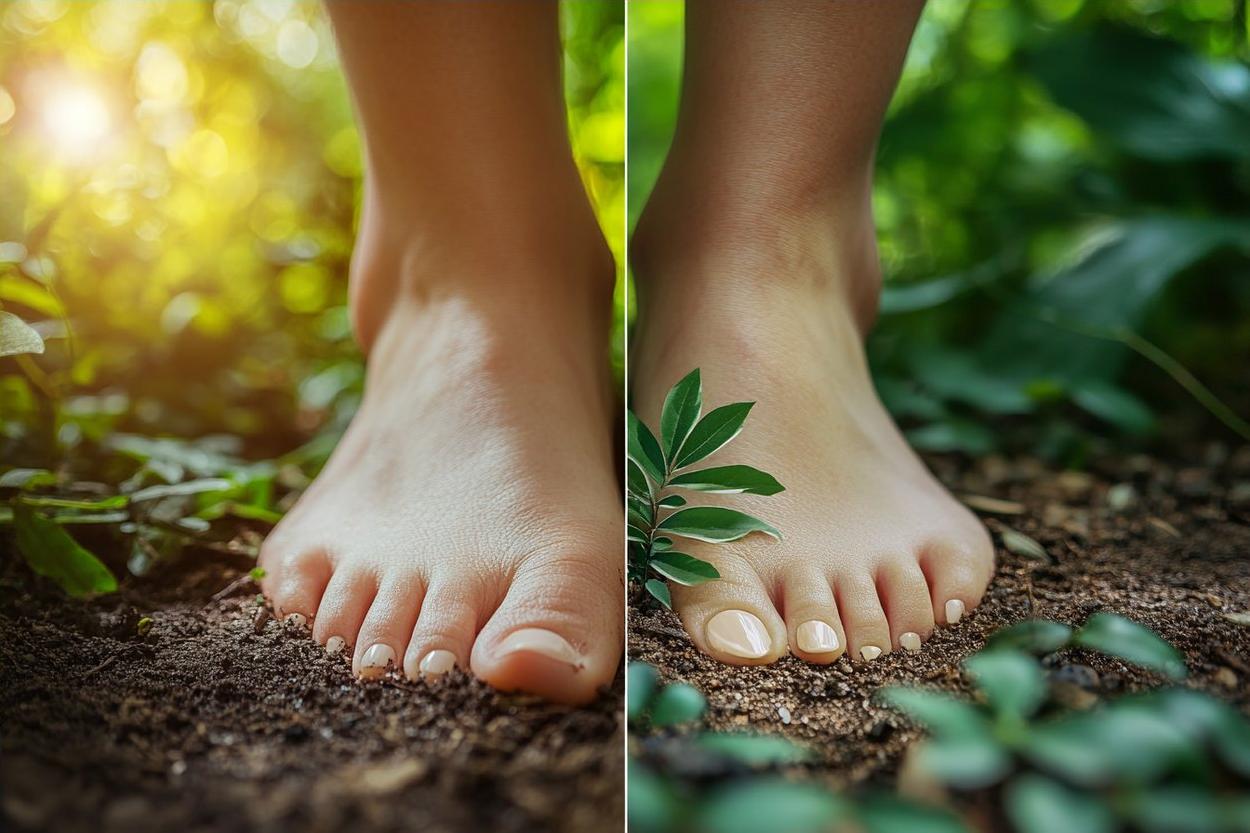Unearthing the Health Benefits of Earthing: The Science and Practice
Have you ever kicked off your shoes and strolled barefoot on the beach or in a grassy park? The simple act of reconnecting with the earth beneath our feet is a practice known as earthing or grounding. While it may seem like a new-age wellness trend, the science behind it is fascinating, and the potential health benefits are worth exploring.

Understanding Earthing: From Ancient Wisdom to Modern Science
The practice of earthing dates back to ancient civilizations. Indigenous cultures around the world have long recognized the importance of connection with the Earth, practicing barefoot rituals and ceremonies. In more recent years, science has begun to uncover the reasons behind these practices.
The Earth’s surface carries a negative charge, and when we make direct contact with it, this charge can be transferred to our bodies. Research suggests that this can help neutralize positive charges, often called free radicals, that can damage our cells.
The Science Behind Earthing: What Does Current Research Say?
Several studies have delved into the potential health benefits of earthing. For instance, a 2012 review published in the Journal of Environmental and Public Health found that earthing could help improve sleep, reduce pain, and decrease stress and anxiety.
Another study published in the Journal of Inflammation Research in 2015 suggested that earthing might reduce inflammation in the body. This is significant as chronic inflammation is linked to many health conditions, including heart disease, diabetes, and cancer.
The Practice of Earthing: How Does it Work?
Practicing earthing is simple. It involves making direct contact with the Earth’s surface with your bare skin—usually your hands or feet. This could mean walking barefoot in the grass, sitting on a sandy beach, or even just touching a tree.
The benefits of earthing can be experienced anywhere you can directly connect with the Earth. However, it’s essential to avoid areas treated with pesticides or other chemicals, as these can be absorbed through the skin.
Striking a Balance: The Pros and Cons of Earthing
While the science behind earthing is promising, it’s essential to maintain a balanced perspective. Earthing should not replace traditional medical treatments but could be a useful addition to a holistic wellness routine.
One of the primary challenges of earthing is the potential for exposure to harmful bacteria or parasites, especially when walking barefoot. Always ensure the area is clean and safe before practicing earthing.
A Closer Look: Fascinating Facts and Tips
-
You don’t need to spend hours earthing to reap the benefits. Even just 30 minutes can make a difference.
-
Earthing is a free and easily accessible form of natural therapy.
-
There are earthing products available, such as mats and sheets, designed to mimic the effects of direct contact with the Earth.
In conclusion, earthing is a practice rooted in ancient wisdom and supported by modern science. While it’s not a cure-all, it may offer some health benefits and can be a simple and enjoyable addition to a balanced wellness routine. As with any health practice, it’s always wise to do your own research and consult with a healthcare professional if you have any concerns.




